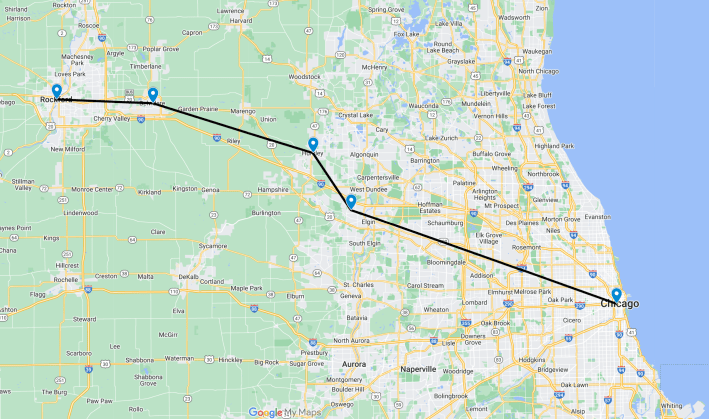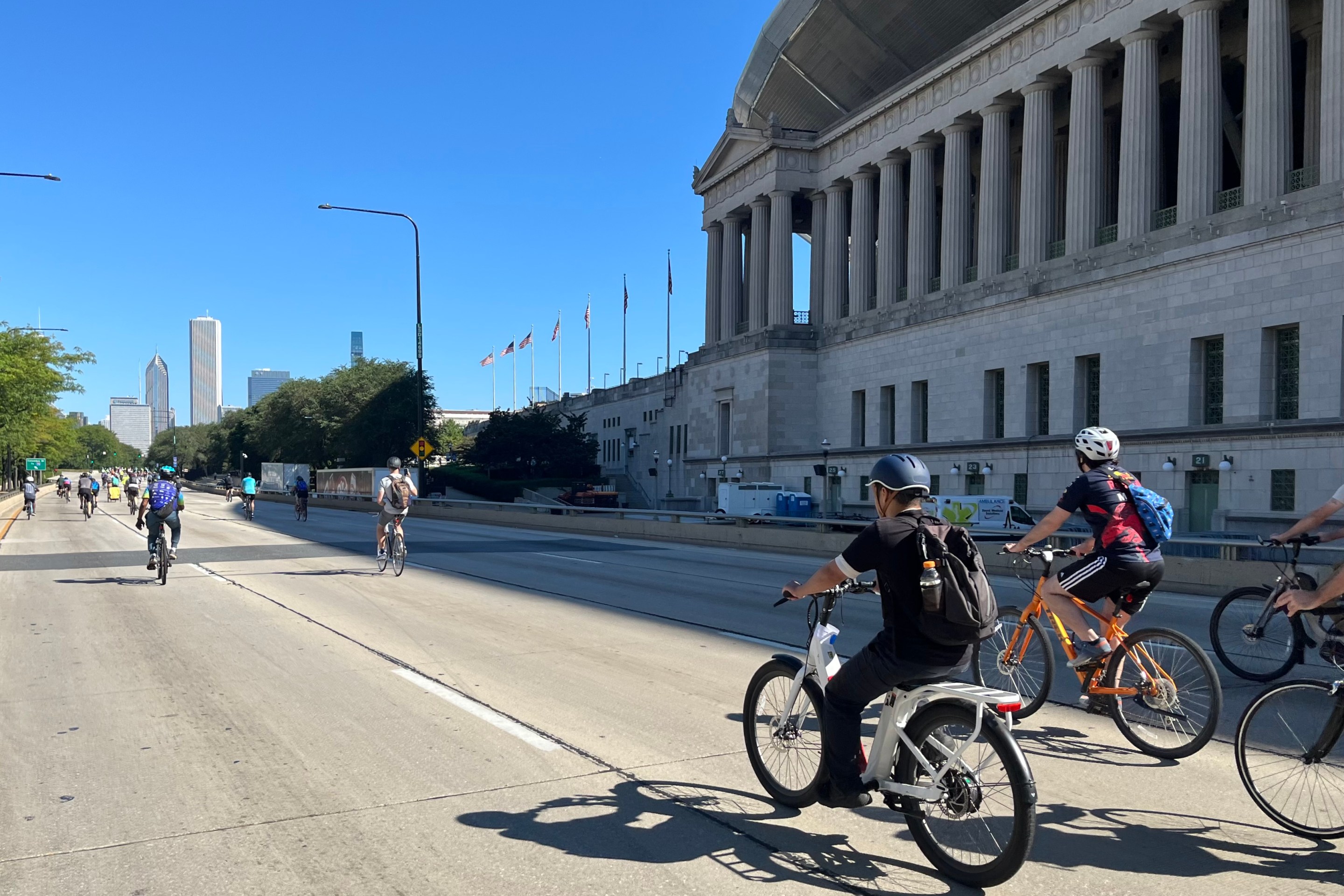Last Thursday when Illinois governor JB Pritzker announced that Metra, not Amtrak, will be providing the long-discussed rail service to Rockford, your unhumble correspondent had many questions.
The planned Rockford and Chicago service – with stops planned for Elgin, Huntley and Belvidere – represents a new frontier for Metra. The commuter railroad has been reluctant to expand its service outside Chicagoland's six-county Regional Transportation Authority oversight area beyond its existing service to Kenosha, citing the need for funding to not only make the necessary rail improvements, but to fund the ongoing operations.
The press release issued by the governor’s office mentioned that the state is providing $275 million in Rebuild Illinois infrastructure funding to Metra for the project. And the official Chicago to Rockford Rail website mentioned that some of this money would be used for necessary rail upgrades. But the operations funding issue wasn't explicitly addressed in either info source.
There is also the question of whether there would be any stops on the Metra Milwaukee District West portion of the line, what the fares would be and what would be the exact schedules.
Streetsblog reached out to the Illinois Department of Transportation, which is overseeing the Rockford project, and Metra to try to get answers to some of those questions. While many details are contingent on negotiations between Metra and Union Pacific Railroad, which owns the rail corridor between Rockford and Elgin, IDOT officials indicated that Rebuild Illinois funding will cover both construction and the initial operating costs. After that, the department will most likely provide an ongoing subsidy, similar to the funding arrangement between IDOT and Amtrak for the state-supported Carl Sandburg/Illinois Zephyr, Illini/Saluki and Lincoln Service routes.
According to Metra spokesperson Michael Gillis, the Metra board of directors is expected to vote on whether to approve the planned service either later this summer or in early fall. Passenger service is slated to start in 2027.
Why Metra?
Amtrak’s Black Hawk route ran between Dubuque, Iowa and Chicago with stops in East Dubuque, Galena, Freeport, Rockford and Elmhurst, between 1974 and 1981. Since 2010, there were discussions to restore service as far as East Dubuque. Planning was paused under Gov. Bruce Rauner, and after planning resumed upon Pritzker's election, negotiations with the Canadian National Railway Company stalled.
The project was cut back to Rockford, because CN owns the only railroad tracks on the west half of the route. But there was an alternative to reach Rockford – the Union Pacific tracks that start roughly where Metra’s Milwaukee District West line ends
When the Rebuild Illinois capital bill passed in 2019, it included $275 million for Chicago-Rockford rail service, mostly to build a rail connection between Metra and UP tracks, add passing sidings and upgrade tracks, signals and crossing gates to allow trains to travel 79 miles per hour, and reduce conflicts with freight trains. Some of the infrastructure, such as the platform at Huntley, is already in place. But the plan has not officially been that Amtrak would operate the service – at least until the July 6 announcement.
IDOT spokesperson Maria Castaneta said that there were many reasons why the state chose to go with Metra. “There were several factors involved in making the final decision. Ultimately, Metra provided a better option in that the estimated cost of infrastructure improvements is likely going to be less [than it would have been with other rail companies.] The fact that passenger trains already have the ability to go to Elgin – literally half the distance to Rockford – along with the strong relationship between Metra and Union Pacific Railroad, the host railroad between Elgin and Rockford, were factors as well.”

It's worth noting that the relationship between Metra and Union Pacific has not always been strong. There was a long, bitter stalemate between the two companies, which included UP refusing to have its conductors collect fares during the COVID pandemic on the Metra lines it operated.
That conflict reflected the fact that the freight railroad was trying to get out of the commuter rail business, which Metra resisted. But since a judge recently ruled in Union Pacific’s favor, the two parties presented a united front as the freight railroad began the process of transferring operations of the three UP commuter rail lines to the commuter rail agency.
In recent years, Metra has been consistent about not wanting to expand outside the RTA area, preferring to focus on existing services. It only agreed to study the possibility of expanding BNSF Line service further west because federal funds have been earmarked for it.
But in Pritzker's recent press release on Rockford passenger rail, Metra executive director Jim Derwinski voiced confidence about the plan. "This is a major step for Metra to journey outside our six-county, Chicago-area home, but it is something we are well-prepared to do. We know how to operate passenger trains – we've been doing it for nearly 40 years, through polar vortexes and hot streaks and pandemics and with an on-time performance rate that is the envy of our peers."
Other questions
Metra's Gillis told Streetsblog that Rebuild Illinois funds will cover the construction and the operations, at least at first. Asked what will happen once Rebuild Illinois runs out, he referred me to IDOT.
IDOT's Castaneda said that the exact operational costs will depend on negotiations between Metra and Union Pacific. "The plan is for operations and maintenance not offset by fares to be paid out of the annual passenger rail operating appropriation, which is the case with other state-supported passenger rail service to Milwaukee, Quincy, St. Louis and Carbondale," she said, referencing the Hiawatha route to Cream City, which IDOT co-funds with its Wisconsin counterpart, and other state-supported Illinois Amtrak services.
Gillis said that the service will likely include a stop at downtown Elgin, a major regional transit hub where Chicago-Rockford line riders could catch Pace's 603 express bus to the Rosemont Blue Line station, which is only one 'L' stop from O’Hare.
Interestingly, the Rockford line's Union Pacific tracks pass the village of Union, home of the Illinois Railway Museum. While there was discussion of building a Chicago-Rockford station in Union early in the original planning process, it didn’t get very far.
Gillis said it was too early to discuss schedules and fares. The announcement comes as Metra is considering doing away with a system-wide $100 monthly pass and a $10 system-wide day pass.






